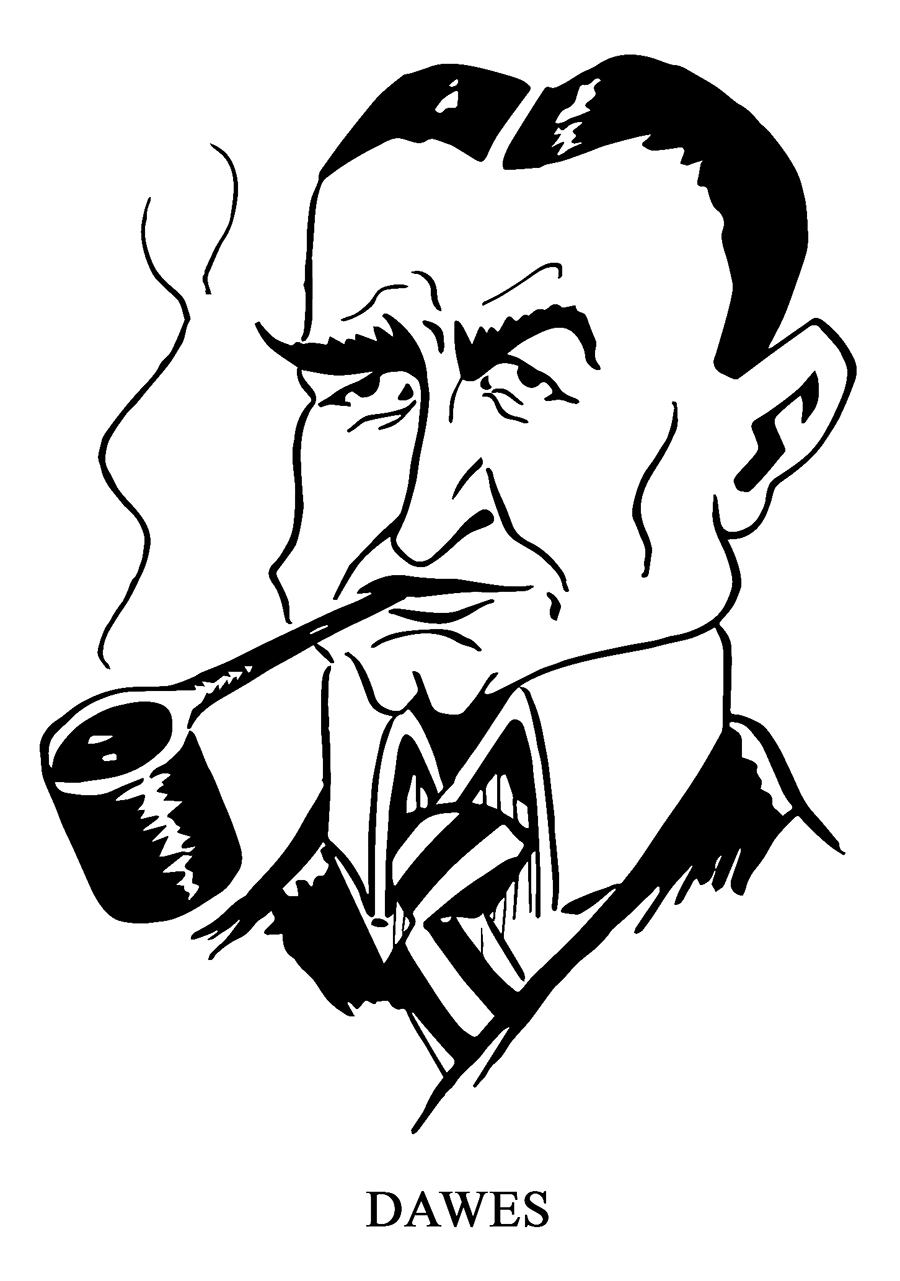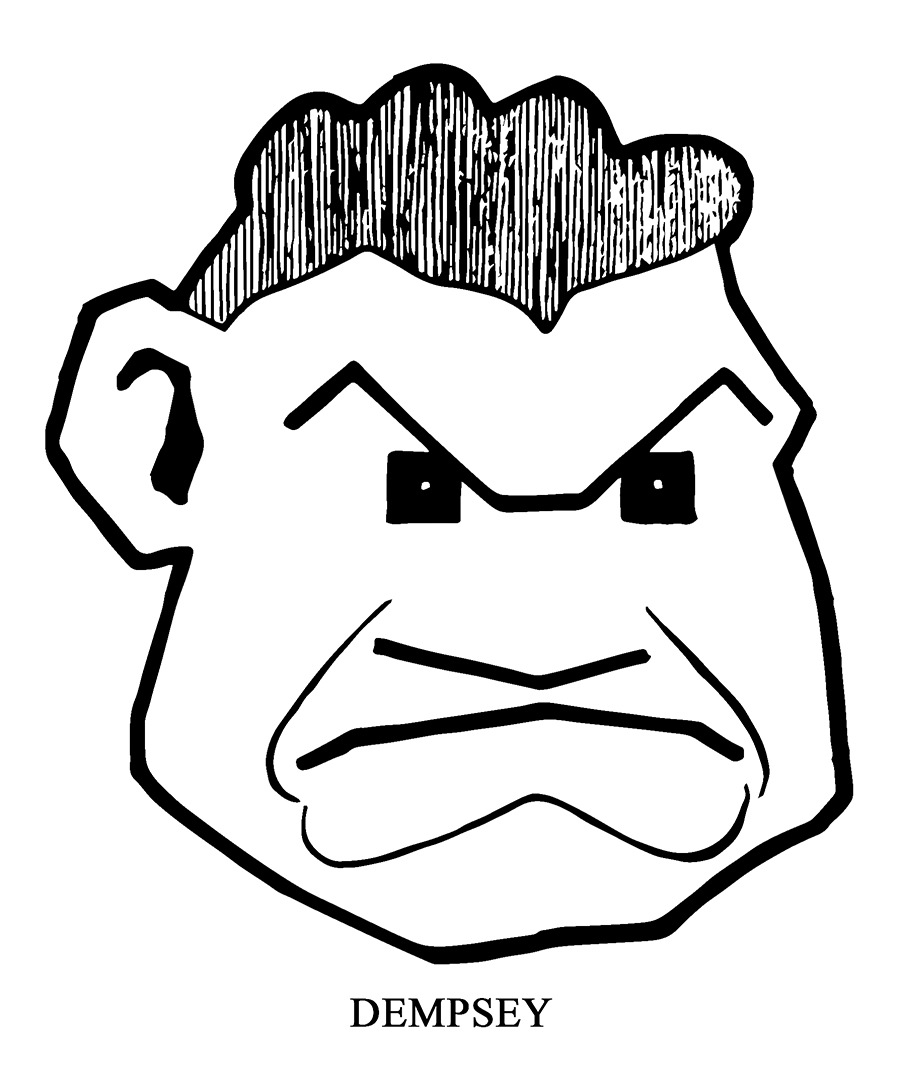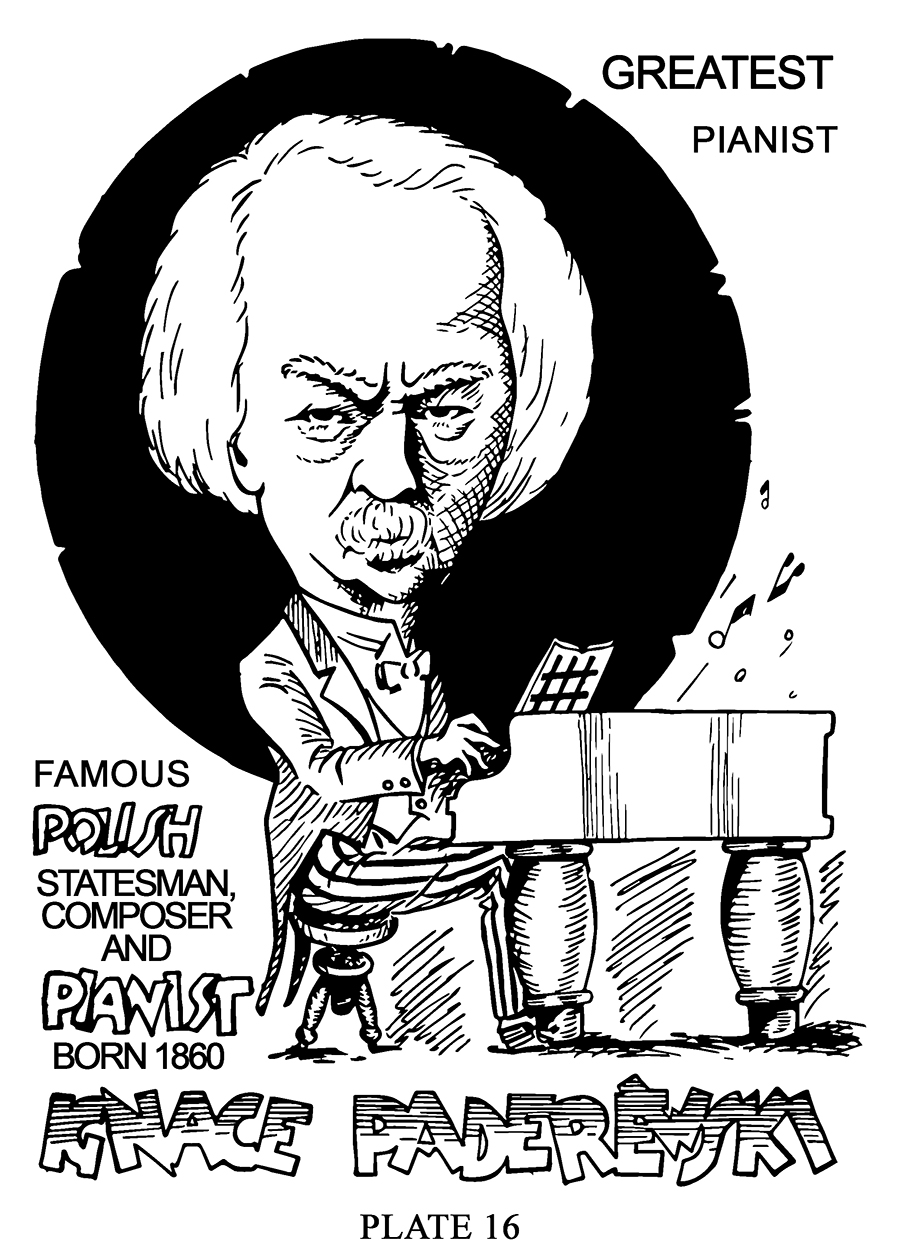Technique is the method of performance in art; in other words. the style or method used in producing a work of art. In caricaturing the purpose of the drawing may influence the technique of the artist, or rather may influence the artist in choosing the technique. For example, a caricature drawn for newspaper reproduction is usually drawn ‘with pen and ink lines similar to the drawings on Plates 8, 13, and 16. Some artists use Lithographic Pencils on a specially prepared, pebbled surfaced board. Ripley of “Believe It Or Not” fame produces his drawings by this method. Wash is seldom used in this country for newspaper drawings.
A large number of caricatures are used in sports cartoons for newspapers. Sports cartoons may of course illustrate various sports, such as: boxing, baseball, basketball, football, golf, hunting, fishing horseback riding, and others. Often in these humorous drawings the central figure is drawn with a small body and a large caricatured head, somewhat as the caricatures on Plates 8, 13, and 16. Around this central figure are drawn smaller action figures illustrating one or more sports. Names, dates, comments and other lettering and details are placed so as to make a good composition.
Somewhat the same technique is employed in political cartoons, in which Presidents, Vice-Presidents, Senators, Congressmen, Cabinet Members, Governors, and other statesmen and prominent men may be caricatured. Here again the purpose of the drawing may determine the way it should be drawn. By “purpose of the cartoon” is meant whether it is intended to aid or injure the one caricatured. If it is to harm the caricatured, naturally he will be represented differently from what he would otherwise. Figures 1, 4, and 5 on Plate 3 represents the Ex-Kaiser as a rather stern, ruthless, and strong willed monarch. There is no doubt that he is stern and strong willed, but not so terrible as these caricatures represent him. Figures 2 and 3 on the same plate represent more of a kindly old gentleman, but even in them one can discern that he is no weak person by his stern features and prominent jaw. It should be interesting for the student to study some of the caricatures of Thomas Nast, if he can acquire reproductions of same, even though cartoonists of today do not go as far as Nast did.
Humor is very important in newspaper cartoons. There are three ways of putting this quality in them, and these are, action, expression, and exaggeration. A cartoon is rather flat and uninteresting if it lacks these qualities.
Some of the caricatures in this book might be termed modernistic. Especially the caricatures of Hindenburg, Carnegie, R. T. Coffin, Marshal Foch, Lorado Taft, Charles Darwin, and Jack Dempsey. There are also others of this type. Some of these are spattered; some are drawn with straight lines; some with curved lines; and some with light and very heavy lines which were made with a lettering pen. The character of the person and the shape of the features has determined the technique used, for which they were most adapted. It is assumed that the above named caricatures are best as they are, although caricatures of the same men might be drawn differently. The caricatures of Woodrow Wilson might be drawn with curved lines, but it would perhaps not be as good as this drawing and would lack its originality. However, the drawing of R. T. Coffin could hardly be drawn well with straight lines due to the round face. Neither could that of Carnegie, for the same reason. They are simply not adapted to the techniques .employed in some of the other drawings.
 If the head is drawn in a modernistic technique, the body, if a body is used, should be in the same style. This was done in the caricatures of Hindenburg and Howard Thurston.
If the head is drawn in a modernistic technique, the body, if a body is used, should be in the same style. This was done in the caricatures of Hindenburg and Howard Thurston.
Since stipple, or rather spatter has been employed in a number of drawings in this book, it seems appropriate to explain here the procedure for this method of drawing.
The large caricature of Carnegie on Plate 14 is spattered on the hair, eyebrows, and beard. As one can readily see, first an outline drawing is made. If it is suitable to be spattered, a stencil is cut for this purpose. To make this stencil, place a sheet of transparent paper, sufficiently large, over the drawing and trace the outlines of the areas to be stippled (spattered)* If transparent paper is unavailable, the drawing may be traced with carbon or graphite paper. In this way the drawing to be traced would be placed on top. The next step is to cut out the portions to be spattered from the stencil, as the shaded area in Figure 2, Plate 14. A single edge razor blade, or a pocket knife is very useful to cut the stencil where it is inconvenient to cut with shears.
Place the stencil over the outline drawing so that the cut out portions register perfectly with the outlines of the drawing to be stippled. Thumb tack the two together, or place weights on them to hold them in the desired position. Pour a small quantity of drawing ink in a saucer or similar receptacle. An old tooth brush is used for spattering. Dip the brush lightly in the ink and draw the bristles across a coin or other suitable object as illustrated in Figure 3, Plate 14 A little practice will teach you to do this properly.
Some solid black should also be used with this spattered shading to give contrast and thereby improve the drawing as a whole. In the Hindenburg Caricature, Plate 7, spatter shading has been used on the body and in tie lettering underneath, as the same technique should be employed consistently throughout an entire drawing or composition, as stated previously in this chapter.
Quite often wash is used in caricaturing. For this technique, Lamp Black water color is used with a water color brush. First an outline drawing is made with a pen and black waterproof drawing ink on water color paper. Then the wash is applied with a camels hair brush. Additional washes are used for the darker parts, and an effort is made to blend the two values.
The frontispiece is a reproduction of an air brushed caricature study of George Arliss by Eddie Burgess. This drawing was made for a theatrical display, and the artist has produced something original and very good. This caricature has originality, humor, and most important of all, it has a fair likeness of the subject caricatured.
Caricatures of some subjects are better drawn in one technique, while others are best caricatured in another technique. The only way to determine the best technique for any particular subject is by good judgment, and experiment.



